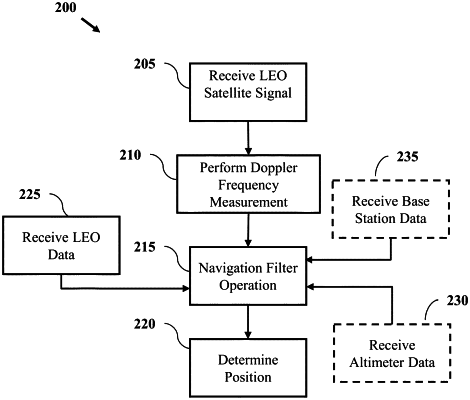| CPC G01S 5/0284 (2013.01) [G01S 5/009 (2013.01); G01S 5/0246 (2020.05)] | 20 Claims |

|
1. A method for determining position based on low Earth orbit (LEO) satellite signals, the method comprising:
receiving, by a device, one or more low earth orbit (LEO) satellite signals, wherein the LEO satellite signals include direct quadrature phase shift keying (QPSK) signals;
performing, by the device, a Doppler frequency measurement for the quadrature phase shift keying (QPSK) signals for each downlink channel received, wherein the Doppler frequency measurement includes
filtering each received downlink channel, and
performing a channel tracking operation for each filtered downlink channel, the channel tracking operation including an independent phase-lock loop to track each filtered downlink signal, wherein each phase-lock loop determines a Doppler shift measurement; and
performing, by the device, a navigation filter operation to determine clock drift based on each Doppler shift measurement from each channel tracking loop; and
determining, by the device, a position of the device, wherein the device determines position based on clock drift determined by the navigation filter operation and tracking data for each LEO satellite signal source.
|